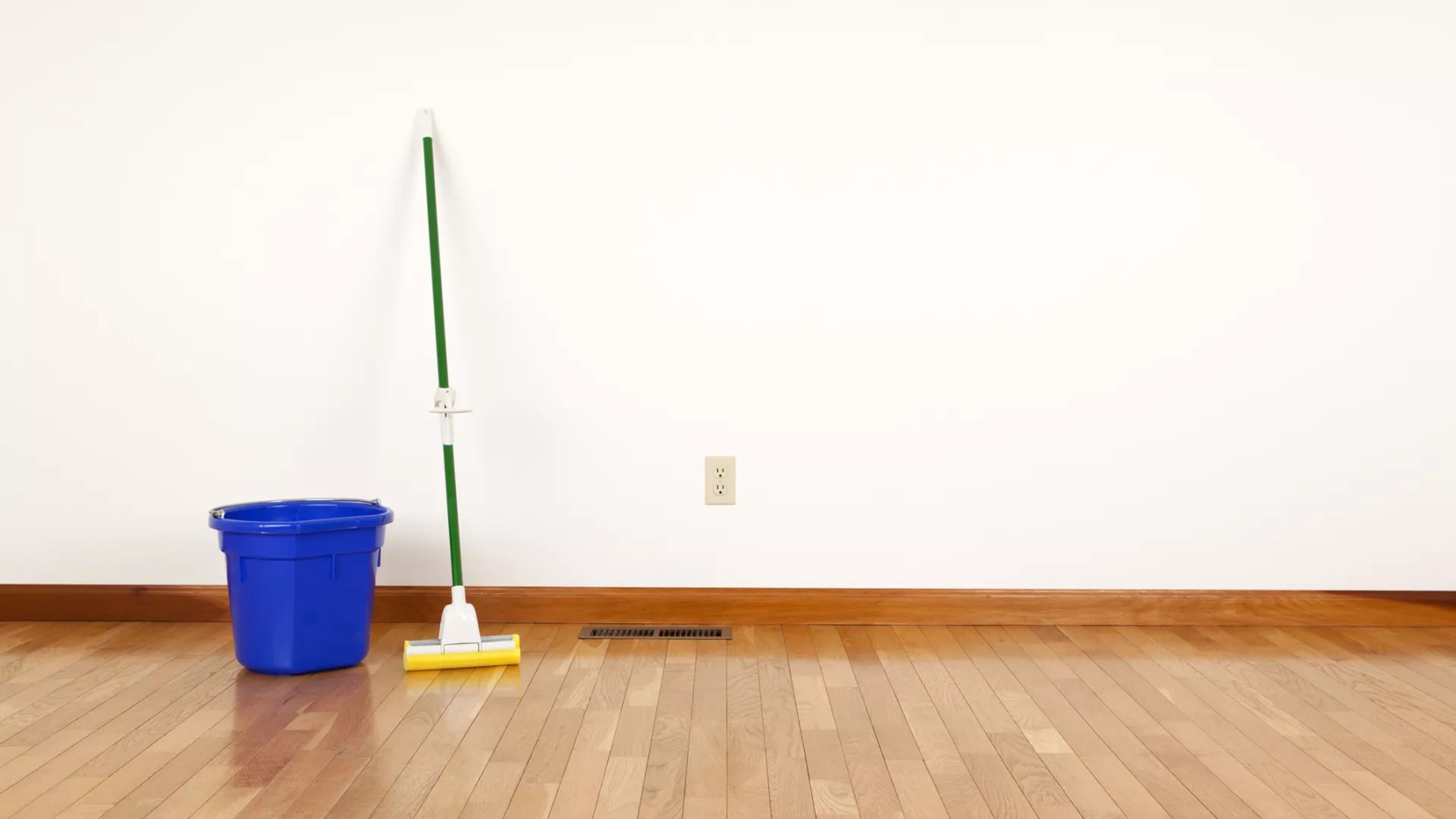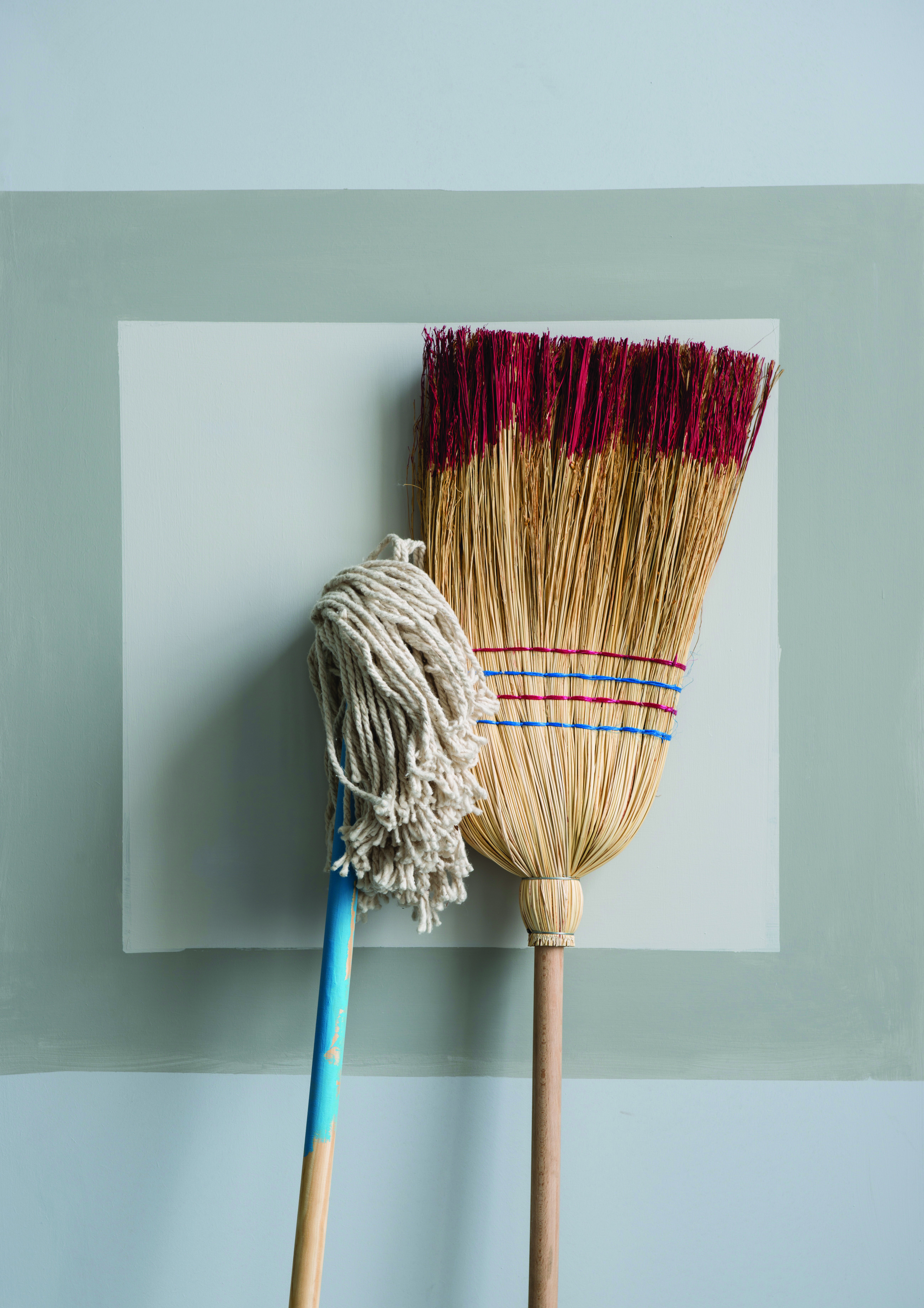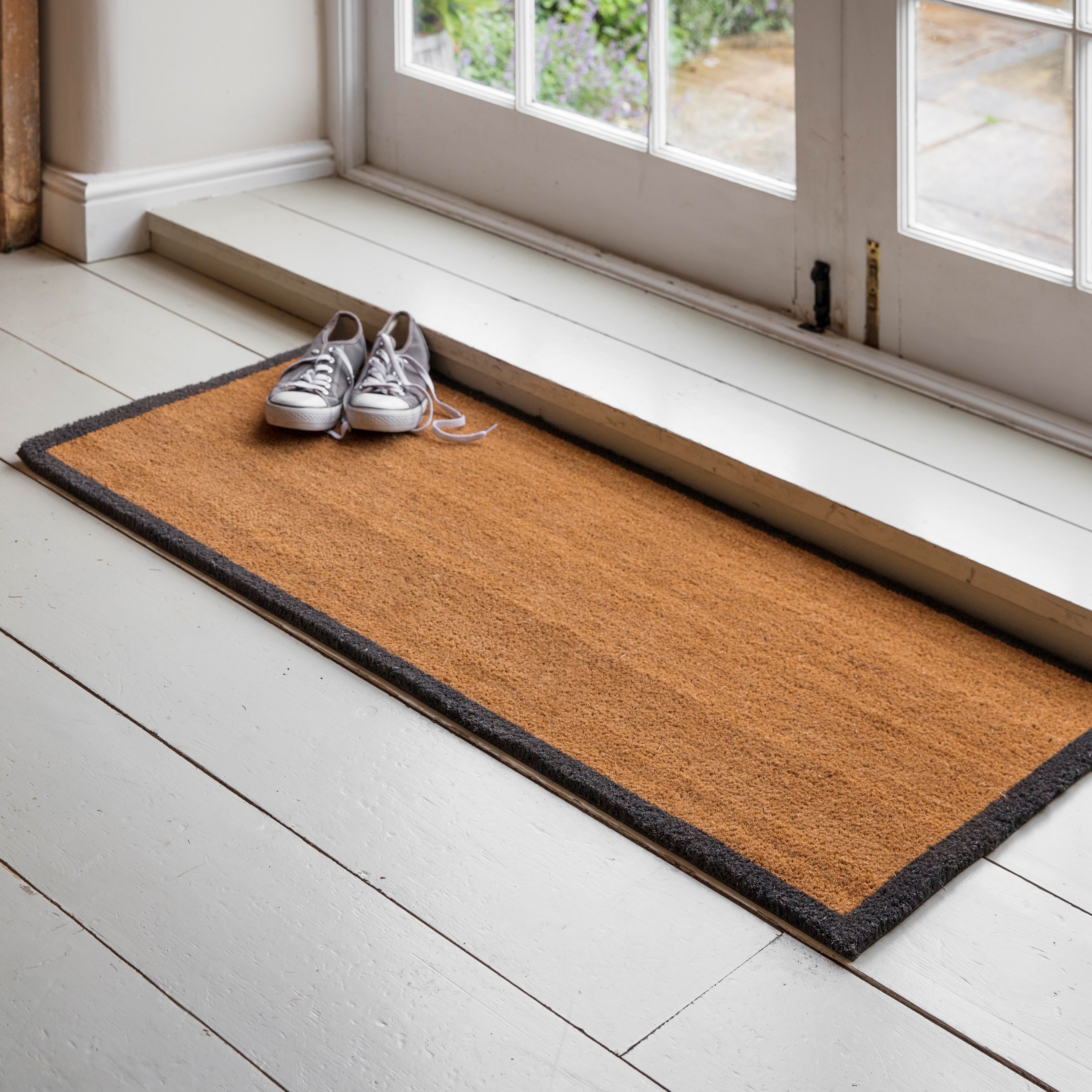How to clean wooden floors easily and naturally – the best ways to bring them up
If you're wondering how to clean wooden floors, use these simple and even natural methods for great results. Plus, why you should only try vinegar with caution...

Knowing how to clean wooden floors properly is a must if you have this flooring option in home. Because, while wooden flooring is a durable option for just about any room in the home, it does still require some care and maintenance – especially if you want to maximize its longevity.
There are a few tried and tested ways to clean hardwood flooring (yes, you can use one of the best vacuums!) – and these methods below are the best. If your wooden flooring is looking a little dull, take a look at our guide to the best wooden floor cleaners too, before using our step-by-step guide to help you restore it to its former glory.
How to clean wooden floors
Before we get started, you will need:
- Floor mop
- Vacuum cleaner
- Wood floor cleaner
- Soft cleaning cloth
- Deep cleaning product
- Fine grade steel wool
- Bicarbonate of soda
- Vinegar
And if you've got different flooring to clean? This is how to clean a floor like a pro – whatever it's made from.

What type of hardwood floor do you have?
Before you get started, it's important that you find out what finish you have on your wooden floor.
New wooden floors: Most new wood floors are sealed with a polyurethane coating; they’re also stained or painted to protect the surface. These floors are easy to care for and are resistant to stains and water damage.
Never use oils or waxes on these floors, as they will become dangerously slippery to walk on.
Get small space home decor ideas, celeb inspiration, DIY tips and more, straight to your inbox!
Old wooden floors: In older homes the wooden floors are likely to have a soft, oiled finish, this oil soaks into the grain, hardens it and forms a top seal. If you have this kind of floor it will need to be looked after and protected with oil or wax.
Lacquered or varnished finish: If your wood has a lacquered, varnished finish you’ll find they are not as resistant to moisture and wear as polyurethane sealants. This means that you will need to treat them the same as you would an oiled floor.
Unsure what kind of finish your wooden floor has? Don’t worry – there's an easy way to find out. Just rub your finger across it and if no mark appears, the floor is surface-sealed. If a mark is left, the floor has been treated with a seal, oil finish or varnish.

A simple weekly clean for a wooden floor
1. Start by vacuuming the floor to collect any dust, dirt or pet hair. If you are worried about scratches, use the soft floor-brush attachment of your vacuum.
2. Get a mop and fill a bucket full of clean, warm water. Spray an everyday cleaner directly on to a patch of the floor. This is not suitable for waxed or oiled floors.
3. Dip your mop into the bucket, wring out all water until it is just damp, and mop backwards and forwards across the area you have sprayed following the grain on the wood. Move to next area and repeat. The floor will dry in minutes.
4. For oiled floors simply use a bucket full of plain, warm water and mop as above. Change the water when it gets cloudy. Leave to air dry for 15 minutes, opening windows if appropriate.
5. Buff the floor with a soft cloth.
A deep clean for a wooden floor
1. Dirt, grease, oil and grime will naturally build up on your wooden floor, so it’s a good idea to give it a really good deep clean twice a year to keep it looking its best.
2. Buy a trademarked deep cleaning product that suits your floor type and use according to the instructions – if in any doubt, ask the manufacturer of your floor what products they recommend.
3. Dip a mop into your bucket of cleaning product and wring out so that it’s damp, not soaking wet. Mop the floor, being careful to not leave huge puddles of water, as this can ruin the wood. Some cleaning products need to be rinsed off with a clean, damp mop afterwards so check the instructions on the bottle.
4. Open the window and air dry – or if it’s too cold, turn on the heating to speed up the drying process.
How to remove stains from an oiled floor
There are a few options if you're wondering how to clean wooden floors that are oiled, especially if you need to remove stains. Try:
- Baking soda: For general scratches and scuff marks, put 1tsp of bicarbonate of soda on a damp sponge and rub over marks.
- Washing up liquid: For an oily stain, rub the area with a soft cloth and a blob of washing-up liquid to break down the grease. Rinse with clean, warm water and repeat until the stain has gone.
- Steel wool: For dark spots – such as water marks and pet urine – rub with a fine grade steel wool before polishing with a soft cloth dipped in floor oil. Note: Chose an oil color to match the color of your floor.
- White vinegar: If the area is still dark, apply 1tbsp of vinegar and let it soak into the wood for about an hour. Rinse with a damp cloth, then buff up with the oil that matches your floor color.
- Floor oil: Remove heel marks by rubbing with fine steel wool and floor oil.
For stubborn stains that don’t respond to treatment, lightly sand the floor with fine paper, clean with fine grade steel wool and white spirit (or white vinegar), then buff up with the oil that matches your floor’s natural color.
Find more stain removal tips in our guide.

How to clean and protect wooden floors
- Remove dust and dirt regularly: Dust and dirt are two of the most harmful things to wooden floors, so you don’t want either sitting on your floor for too long. Reusable microfiber pads attract dust, dirt, and grime and will keep your floors looking fresh and clean. Depending on how dusty your home gets, you might have to use a microfiber mop or vacuum daily, if not every other day.
- Wipe up spills immediately: Wipe then and buff dry to avoid stains setting in – as they can of course be much harder to get rid of.
- Never flood a floor (especially corners): When mopping your hardwood floors with the best mop, resist the urge to over-saturate your mop. Water is not wood's friend, as it's so porous, so when lots of moisture seeps in, it can cause discoloring or the wood to buckle.
- Avoid steam mops: Even the best steam cleaner on the market is sadly not the wisest choice for your hardwood floors. While these mops are ideal for non-porous floors like laminate and tile, they saturate wood floors with too much water, an effect that's intensified with steam.
- Steer clear of harsh detergents: Avoiding any chemicals and harsh cleaners is vital. For instance, while some are partial to Murphy’s Oil Soap, the cleaner can cause a buildup over the finish of your floors, and leave behind a sticky residue that makes footprints or streaks more visible.
- Try vinegar in an inconspicuous spot first: Many praise vinegar, and cleaning with vinegar can be great – but the all-natural cleaner can be too acidic for some hardwood floors, and may react negatively with your finish and cause some dulling or damage. Spot test an area before you use it to treat stains as above.
- Use furniture pads: It’s important to prevent wear, scratches, and damage in the first place. This means outfitting the bottom of the legs of furniture with furniture pads, so the wood doesn’t suffer indentations or scratches.
- Use door mats: Have them at every entry to your home, as they are also necessary to prevent water or dirt from entering the home and damaging the floors. One outside and in the entryway is best.
- Invest in an area rug: One of the easiest and most stylish ways to protect your hardwood floors is with a rug. Area rugs are like furniture pads in that they’ll protect the hardwood floors from scratches. They also catch the dust and dirt that your door mats don’t. Just make sure they don’t have a rubber or synthetic latex backing or a rough exterior that will scratch or damage the hardwood.
- Monitor sunlight levels: Whether you have curtains or blinds, be aware of how much sunlight you’re allowing onto your hardwood floors. Wood is photosensitive in the same way we are. The more light they get, the darker they become. Areas of a hardwood floor hidden under a rug may appear much lighter when the rug is moved. To prevent this, you’ll want to move rugs and furniture around, so you don’t end up with light and dark patches of wood. You could also invest in curtains, blinds, or shades that help filter light around rooms.

Tips from the pros for cleaning wooden floors
Martha Stewart along with Mary Gagliardi of Clorox, suggests that 'Dirt and grime, especially, can make your hardwood floors look dull. If this is the case, deep clean hardwood floors every two to four weeks... ' Gagliardi also suggests sweeping or vacuuming (only if you have a hardwood floor attachment), then mix up your cleaning solution and 'use a conventional mop (a mop with hands-free wringing makes the job even easier) or you can use a microfiber mop'.
Donna Smallin Kuper creator of Declutter.com shares that 'A common mistake is cleaning hardwood floors with vinegar and water. The makers of wood and wood laminate flooring beg you not to do that as vinegar is acidic and can harm the surface of your floors. They recommend vacuuming first and then using a only a damp mop... Also, never use an eraser-type sponge to remove a stain from wood flooring, as it will remove the finish as well as the stain. '
Now you know how to clean wooden floors, you can have your wooden floors looking good as new, for years to come!